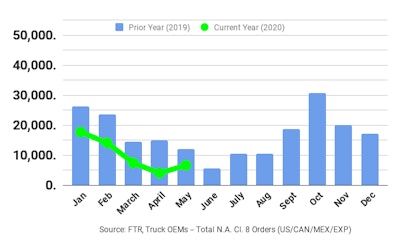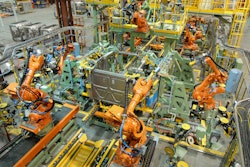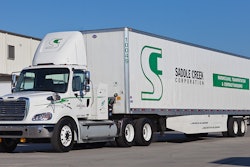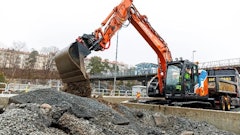
Preliminary data on North America (NA) Class 8 truck orders for May 2020 show an increase over April, but decline compared to a year ago. Orders were in the range of 6,600-6,700 units, depending on the source.
FTR reports Class 8 net orders for the last 12 months total 155,000 units.
Fleets remain reluctant to order trucks, as states extended restrictions due to COVID-19, creating additional economic turmoil says FTR. Orders are expected to continue to increase modestly, as economic activity resumes after many of the constraints are lifted. Freight volumes have picked up some after bottoming out in Mid-April. The recovery is expected to be slow and uneven. It has not started quite yet based on the weak Class 8 orders in May. June should be a better indicator, as more economic activity resumes.
Don Ake, Vice President Commercial Vehicles at FTR, comments, "Most of the country still had some severe restraints in place for part of May. It is difficult for fleets to plan for future equipment needs under these highly abnormal conditions. Carriers are more worried about what’s happening today, about their manpower needs and short-term issues, than ordering trucks. The concern about the pandemic goes beyond just the business and economic anxieties and greatly diminishes fleet confidence.
"The economy has entered the restart phase and May was the transition month to get us from shutdown to renewal. Expect Class 8 orders to rise gradually, as caution wanes and fleet buyers begin to focus on the second half of the year and equipment requirements."
 FTR
FTR
According to ACT Research, the NA Classes 5-7 market saw orders improve 5.3% month-over-month, despite being down 57% from the year-ago May volume.
"Reflecting the state of the broader economy, there was little to cheer about in May’s industry order activity," says Kenny Vieth, ACT’s President and Senior Analyst. He continues, “Considering COVID-related lock downs across the U.S. and North America at the start of the month, and a slow reopening occurring through May in most areas, it was not an exercise building customer confidence."
Vieth further explains, "Restarting the manufacturing sector from a full stop was only partly successful, as Mexico’s lock downs remained in effect well after the U.S. began to reopen, resulting in challenging supply-chain dynamics and fragmented supplier sourcing."
Truck orders impacting engine demand
The N.A. Commercial Vehicle On-Highway Engine OUTLOOK, published by ACT Research and Rhein Associates, truck and tractor production volumes are forecast to fall precipitously in 2020, and with them the demand for engines.
Vieth notes, "Coming off the peak of 2019, we expect North American Class 8 heavy commercial vehicle production to drop an eye-watering 66% this year." He adds, "Retail sales will show a smaller reduction, but only because high inventory levels must be reduced to levels in-line with lower demand.
"Freight demand has fallen, global supply chains have been severely disrupted, and even before COVID-19, the world was shifting toward increased e-commerce. The pandemic’s impact has only hastened that trend; in March, e-commerce recorded a 50% increase in home goods sales, and a more than 200% jump in on-line food deliveries.
"All this has a direct correlation to the number and types of commercial vehicles needed, buffered currently by the industry's ability to adjust production amid lock downs and shutdowns," he concludes.
Andrew Wrobel, Global Market Intelligence Commercial Vehicle and Off-Highway Forecasts of Rhein Associates, comments, "It is anticipated that trucks will increase use of smaller displacement engines, while the forecast predicts a gradual reduction in favor of the 12-14L category for use in tractors, as opposed to the over 14L category. We expect the 12-14L engine segment to dominate in tractor-use demand by 2024."
Regarding Classes 5-7, Wrobel says, "In this market, the current metric of interest is gasoline penetration, which continues to gain share, and is forecast to hit nearly 24% of the market by 2024."
When asked about alternative fuels, Wrobel comments, "Last-mile delivery companies have taken the lead in requiring alternative fuel vehicles due to their proximity to consumers, favorable economics, and the enhancement of brand image. That said, oil prices have plummeted and fleets welcome the lower diesel costs, but we still see committed CNG users striving to meet corporate green initiatives with that fuel."
About non-fossil fuel alternatives, he explains, "Transit buses have seen the greatest application of electric medium and heavy-duty vehicles to date, but major truck OEMs and new entrant programs are underway. Electric medium and heavy trucks are coming, albeit slowly."



















